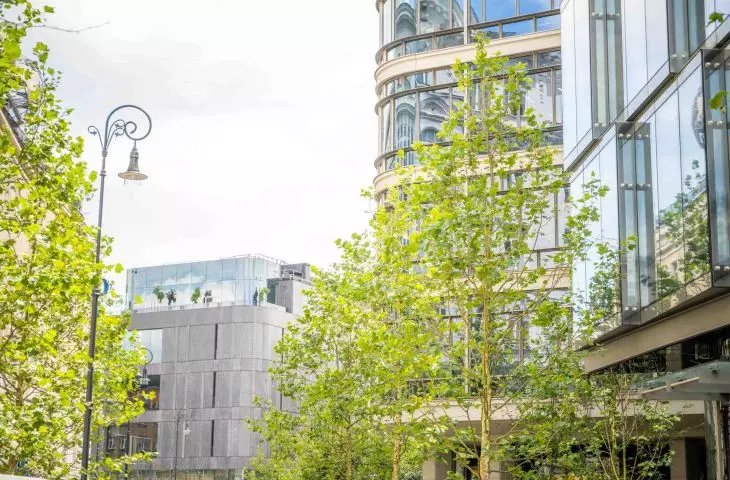EU directives and national standards for environmentally friendly solutions in newly constructed buildings have become the daily bread for designers and investors. Now, however, another piece of the green puzzle is being added, namely local law. The first city in Poland to enact a document promoting green building is Warsaw.
Work on the Warsaw Green Building Standard began as early as the end of 2021. The document was supposed to be a set of guidelines for new and retrofitted city investments, focusing on their environmental impact. Unfortunately, the activities carried out in connection with the Standard, which was then already in the public consultation phase, were suspended the following summer, as Kacper Kępinski wrote for us [see: Warsaw not so green. Work on a key document suspended].
Warsaw Green Building Standard
© UM Warsaw
time for change
The Warsaw Green Building Standard, however, has not been forgotten. The document, which is part of the assumptions enshrined in the Vision for a Green Warsaw and a recommendation issued as part of the Warsaw Climate Panel, is ready, the Capital City Hall announced. On Monday, the relevant resolution was signed by the city's mayor, Rafał Trzaskowski, who commented on its creation as follows:
We know how high the costs of maintaining buildings can be, especially those related to energy. That's why, among other things, we are investing in the thermal modernization of our buildings, and installing photovoltaic panels on more roofs. The Warsaw Green Building Standard goes a step further. Already at the design stage, it will suggest to city investors what solutions are worth using so that the buildings under construction are energy efficient and - thanks to this - cheaper to maintain. We are the first city in Poland and one of the few in Europe and the world to adopt such a comprehensive document supporting green building.
A group of specialists from the capital's SARP branch worked on the Warsaw Green Building Standard as part of the Energy Forum project.
Center for Intergenerational Activity
© XYstudio
Whom the Warsaw Green Building Standard will apply to
The Warsaw Green Building Standard will apply to newly designed city investments. The guidelines contained in it will apply to, among others, investments carried out by the capital's TBSs, the Capital City Development Authority or individual districts. However, the authorities see it not only as a set of requirements for their own initiatives, but also as a signpost that can help private investors and design teams create more economical and environmentally friendly architecture.
ecology on six fronts
So what is included in the Warsaw Green Building Standard? In order to obtain a certificate of compliance, an investment must meet a number of conditions, which are divided into mandatory and optional. As the name suggests, compliance with the mandatory conditions is mandatory, while the second group of guidelines requires compliance with 12 of them. The requirements are divided into six categories: "Greenery and plot development," "Water management," "Energy efficiency," "Sustainable mobility," "Closed-loop economy," and "Health, comfort and safety."
Library in Choszczówka
Photo: Marcin Czechowicz © AMBIENT
In practice, this means, among other things, the use of solutions such as interference-free zones of intended wildness, the use of materials in line with the principles of circular architecture and monitoring of utility consumption. The Warsaw Green Building Standard also introduces tools to help during design work and research of the environmental impact of buildings. Thus, a "Blue-Green Infrastructure Index" appears , which determines the characteristics of the surfaces used in the implementation, or a "Global Warming Index ," measuring the building 's impact on the environment over a specified period of time.
The capital's first building is expected to receive a certificate of compliance with the new standard in the coming days. Recently, Warsaw has been gaining buildings that could aspire to this distinction - a glulam-made library in Choszczówka has just opened, while a Center for Intergenerational Activity on Korotyńskiego Street is nearing completion.


























